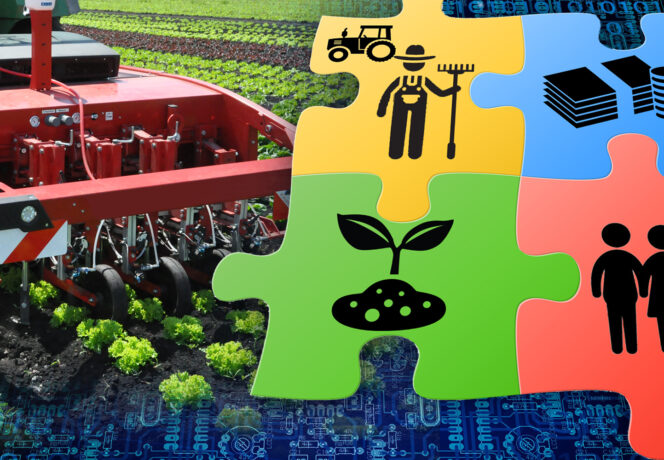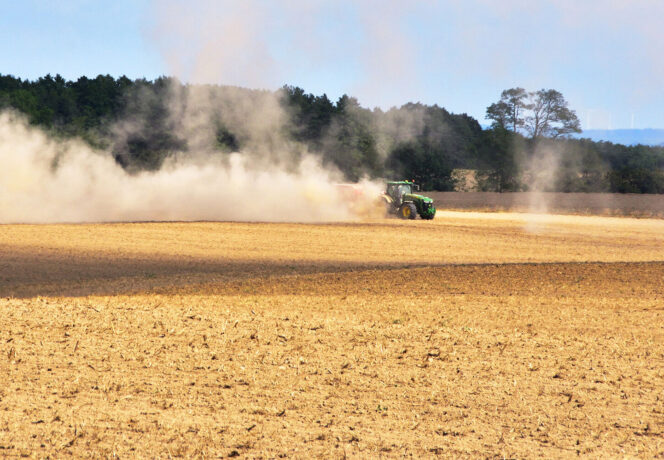
Archive
343 posts

Global wine sales have been falling for several years and the Swiss market has not been bucking this trend. Nevertheless, the growing consumption of sparkling wines in Switzerland and the interest in local products are creating new prospects for leveraging wine production.

Understanding Alpine Farming for Targeted Policymaking
The heterogeneity of summer farms in the Swiss Alps must be take into account in order to develop effective policy measures. This should lead to improved conservation of the ecological and economic functions of alpine meadows.

Language Regions Assess Agricultural Policy Goals Differently
An online survey shows that the Swiss population views all agricultural policy goals as important. Although animal welfare and farmers' incomes are the top priorities everywhere, the language regions show differences in their assessment of the goals.

Consumers Prioritise Animal Welfare over Environmental Sustainability
A study conducted across five European countries has identified the attributes that are important to consumers buying meat and dairy products. The researchers also investigated whether sustainability labels were perceived as helpful.

Digital Farming Is Strengthening the Role of Contractors
The family farm is the backbone of the Swiss agricultural sector. A recent study by Agroscope investigates the extent to which digitalisation has shifted the balance in the institutional structure of farming.

How Vulnerable is Switzerland in terms of Food Imports?
Owing to its low degree of self-sufficiency, Switzerland is highly dependent on food imports. Because of this, it is important to assess its vulnerability in terms of supply security of these key imported goods.

How Cost-Efficient is Organic Pasture Fattening?
Beef can be produced in various ways. Intensive fattening is more productive and extensive organic pasture fattening achieves higher prices – but which is more profitable? Agroscope compared the two production systems to learn the answer.

Consumers See Animal Welfare as a Key Agricultural Policy Goal
Agroscope researchers conducted an online survey to investigate the attitudes of Swiss consumers to agricultural policy goals in all three language regions. The results should help better shape agricultural policy.

What Are the Most Promising Crops for an Agrivoltaic System?
Agrivoltaics combines energy generation and agricultural production on the same land. Although this system is eliciting increasing interest, its success depends on numerous factors and the most compatible crops have yet to be identified.

Farmers’ Identity and Farm Type Determine Their Perception of Social Sustainability
How do farmers experience social sustainability on their farms? As an Agroscope study shows, this depends on farmers’ identities and farm types.

Swiss Cheese Export Potential and Future Opportunities
Cheese stands out as one of the main Swiss agricultural trade offensive interests. Outside the EU, the USA are an important export destination. The CAPRI model allows to assess the impact of a free trade agreement for cheese between the USA and CH.

Regional rather than Individual-Farm Targets for Climate-Change Mitigation
Policies for reducing agricultural greenhouse gas emissions are both more effective and more efficient when set at regional rather than individual-farm level. This approach can help us achieve climate targets in a more cost-efficient manner.

Swiss Food Security 2023: Current Events and Trends
Global food availability is expected to remain stable in the medium term. Food security challenges in Switzerland include the decline in agricultural land area per capita, higher incidence of extreme weather events and increased pressure from pests.

Culture and Policy Incentives Interact to Influence Agricultural Biodiversity Conservation
Different cultural backgrounds lead to different uptake of biodiversity agri-environmental schemes at the inner-Swiss French-German language border. Economic policy incentives could mitigate culture-driven behavioral differences.

How Resilient Were Swiss Agri-Food Importing Firms to COVID-19?
The agricultural sector as an aggregate proved resilient to the COVID-19 shock. But how did it impact agribusiness firms within the sector? Using the Swiss case, we provide the first set of evidence on how agri-food importing firms survived the pandemic economically.

The Role of Agricultural Economics Research in Policymaking
Agricultural economics research uses a multitude of methods and approaches to assess existing and new policy measures. This is the basis for agricultural policy that demonstrably makes a difference, i.e. is evidence-based.

Reality Check: Has the Neo-Liberal, Conservative or Agro-Ecological Vision of Swiss Farming Prevailed?
Agroscope studied the changes in the agricultural sector over the past twenty years in three Swiss regions and compared them with the visions of three associations: Avenir Suisse, the Schweizer Bauernverband and Landwirtschaft mit Zukunft.

Direct Payments Go Hand in Hand with Off-farm Employment
According to the international literature, direct payments influence the decision of farm managers to pursue off-farm employment. An Agroscope study looked into what this meant in the Swiss context.

Do Different Generations Eat Differently?
Agroscope researchers analysed the dietary trends of the different generations in Switzerland. The findings help with the preparation of more-accurate dietary forecasts.

Great potential for environmentally friendly and profitable production
Do farmers who produce in environmentally friendly ways earn less income? As an Agroscope study shows, this needs not be the case, and farmers can actually generate more revenue by protecting the environment.

From Niche Crop to Mainstream Success
Oats, triticale, hull-less barley, lupin, faba beans and buckwheat are rarely cultivated. The EU project CROPDIVA intends to change that. Agroscope analyses the value chains of four of these crops in order to promote their cultivation and processing.

Plant Protection Robots in Vegetable Farming: Labour, Costs, Social Aspects and Ecology
A hoeing and spot-spraying device enables huge savings in the use of plant protection products. Although costs are higher than for conventional plant protection devices, motivated farm managers give this innovative technology genuine prospects for the future.

Swiss Parks – an Economic Success Story for Local Farms?
Thanks to their unique landscapes, the 15 regional nature parks, the majority of which are located in the (pre-)Alps and in the Jura Arc, feature as tourist attractions. But do the parks also provide economic value-added for local agriculture?

Swiss Farmyard-Manure Market: Transports on the Rise
To balance their nutrient cycles, Swiss farms export surplus farmyard manure to farms with free uptake capacities or to composting and anaerobic digestion facilities. Between 2015 and 2020 the volumes of organic manure and recycled fertilisers transported rose significantly, with a consequent increase in transport costs.

Direct Payments Bolster Family Employment on the Farm
Employment in the agricultural sector is declining in many European countries, especially in livestock farming. Direct payments can counter this trend and lead to the employment of more – especially female – family members on the farm.

Swiss Food Security 2022: Current Events and Trends
Despite the current challenges of e.g. the war in Ukraine and climate change, the Swiss food sector is relatively resilient. This is the conclusion reached by Agroscope’s report on behalf of the Swiss Federal Office for National Economic Supply.

How Has the COVID-19 Pandemic Changed our Behaviour?
The pandemic has influenced not only our everyday life but also our behaviour. Agroscope looked at which population groups and behaviours experienced or underwent particularly significant changes, and what this means for our health.

Swiss Dairy Farming in Transition
Swiss dairy farms are more strongly affected by structural change than other farm types. An analysis of the farms exiting the sector or switching focus highlights influencing factors.

How Can the Social Sustainability of Family Farms Be Measured?
Previous criteria used to measure social sustainability have their limits in the case of family farms. We propose focusing on workload. Initial results show that this is an easy-to-use and meaningful indicator.

Direct Payments System: How to Reduce the Administrative Burden
Why do Swiss farmers complain about the administrative burden associated with the direct payments system? Studies conducted by Agroscope show that the issue is not the time required: other factors are more important.